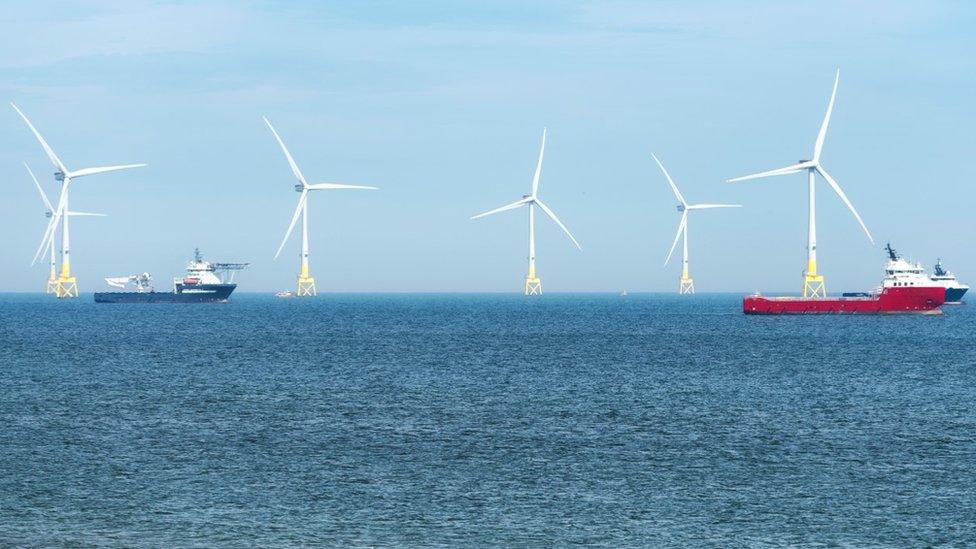Offshore wind farm leasing round expected to raise £260m
- Published

The Scottish government can expect a windfall of about £260m from a new phase of floating wind farm construction in the North Sea and around Shetland.
Thirteen projects have been given the green light to develop plans for more than five gigawatts of capacity.
That would be enough to supply power to more than three million homes.
But most of the new generation will be used to directly supply oil and gas platforms.
The fossil fuels used to extract hydrocarbons make the oil and gas industry among the UK's biggest polluting sectors, and the industry has committed to sharp reductions in that carbon footprint.
The successful bidders were announced, external by Crown Estate Scotland, which leases the seabed and hands all net revenues to the Scottish government for public spending.
Part of the latest round is aimed at innovation, including ways to develop the supply chain in Scotland for floating wind turbines.
The winners, from 19 bids lodged as part of the Innovation and Targeted Oil and Gas (Intog) leasing round, have said they will pay £262m for exclusive development rights.
However, the funds will not be finalised until next year, when the Scottish government's marine plan should be completed.
'One step forward'
There will be further earnings for Crown Estate Scotland once the wind turbines are in operation.
It has faced criticism from some quarters for failing to maximise the value of a similar but larger bidding round known as ScotWind, which raised more than £750m.
It is to supply Britain's National Grid with fixed and floating wind power from large sea areas around the coast, including the west of Scotland.

The licensing round is targeted at oil and gas platforms
Colin Palmer, marine director at Crown Estate Scotland, said the bidding round had been "extremely encouraging".
He added that it should "support innovation, reduce North Sea carbon emissions, and encourage technical and commercial innovation in the offshore renewables market".
Reacting to the announcement, Scottish Renewables said it was "one step forward on the road to the industrial decarbonisation of Scotland".
'Significant milestone'
Chief executive Claire Mack said: "It is essential that Intog is aligned with ScotWind and its commitments to the Scottish supply chain which should enable strong collaboration between projects to invest and support Scottish suppliers with the delivery of these projects.
"ScotWind will be at the forefront of the drive to achieve Scotland's net-zero ambitions and must remain the priority as we see an increase in demand for resources and connections to the electricity network."
Industry body Offshore Energies UK chief executive David Whitehouse said: "The projects selected in today's announcement will play a big part in the transformation of the North Sea - providing low carbon electricity to power oil and gas installations and helping decarbonise the sector.
"This is a particularly significant milestone as it will not only help the sector achieve the emissions reduction goals set out in the North Sea Transition Deal, but will also kickstart the floating wind market at scale - positioning the UK as a centre for excellence in low carbon solutions."
- Published17 January 2022

- Published18 January 2022